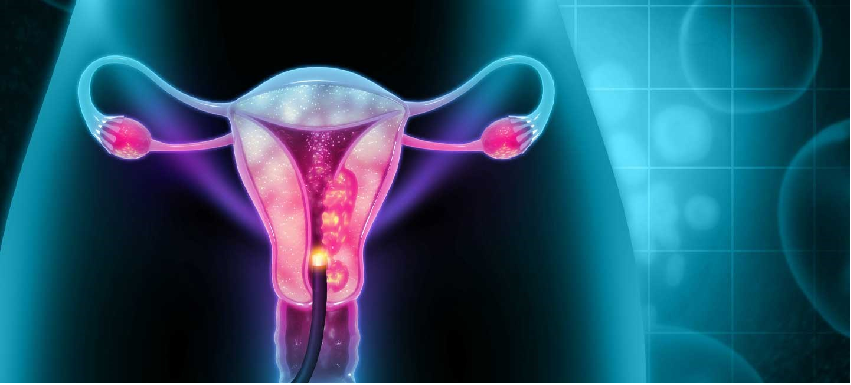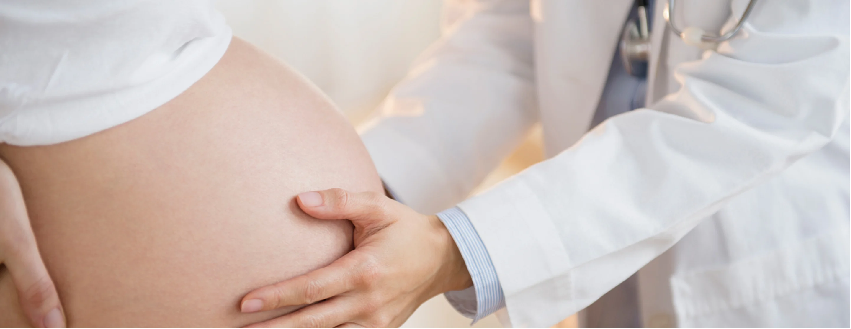Long-term (persistent) infection with high-risk human papillomavirus (HPV) types causes almost all cervical cancer.
Most people who have sex get an HPV infection at some point in life. About half of these infections are from a high-risk (cancer-causing) type of HPV. High-risk HPVs cause cervical cancer as well as many other types of cancer. HPV16 and HPV18 are the high-risk HPV types that cause most cases of cervical cancer.
The immune system controls most HPV infections and they go away on their own. When a high-risk HPV infection lasts for many years. It sometimes causes changes in the cells of the cervix that could lead to cancer if left untreated.
Other Factors That Increase The Risk Of Cervical Cancer

Some risk factors increase the chance that a person with a high-risk HPV infection of the cervix will have a long-term infection. It is possible for this infection to cause serious changes in the cells of the cervix and turn into cancer. These risk factors include the following:
Having a weakened immune system
This decreases the body’s ability to fight HPV infections and other diseases. Infections are more likely to persist and develop into cancer in people with compromised immune systems than in those with a normal immune systems. You may have immunodeficiency due to the following situations:
- You have human immunodeficiency virus ( HIV ) infection or another disease that weakens the immune system.
- You take medications that suppress the immune response. Such as those used to prevent organ rejection after a transplant or to treat an autoimmune disease or cancer.
Smoking cigarettes or being passively exposed to tobacco smoke
People who smoke cigarettes or who are exposed to secondhand smoke have an increased risk of developing cervical cancer. A person’s risk increases the more cigarettes they smoke per day and the longer the habit lasts.
For more information on the different tools to help you quit smoking and how to use them, see the Spanish Smoke free website Exit Notification.
Start having sex at a young age
The risk of persistent high-risk HPV infection that causes cervical cancer is higher in people who start having sex before the age of 18 and in those who have multiple sexual partners. This sexual history increases the chances of exposure to high-risk HPVs.
Other reproductive factors
Using oral contraceptives (birth control pills) and having many pregnancies and childbirths have been shown to be associated with the risk of cervical cancer, although the causes of this are not clear.
Exposure To Diethylstilbestrol Is A Rare Cause Of Cervical Cancer
In utero exposure to the drug diethylstilbestrol (DES) is an independent risk factor for a type of cervical cancer called clear cell adenocarcinoma. Between 1940 and 1971, DES was given to some pregnant women in the United States to prevent miscarriage (early miscarriage) and preterm labor. Women whose mothers took DES during pregnancy have an increased risk of cervical cell abnormalities and clear cell adenocarcinoma of the vagina and cervix.
Cervical Cancer Can Be Prevented
Cervical cancer is preventable and, if found early, is curable. HPV vaccination, routine screening tests, and appropriate follow-up treatment, when needed, prevent almost all cervical cancers.
HPV vaccination
Vaccination for HPV is a safe and effective way to help prevent cervical cancer. The United States FDA has approved the use of the Gardasil 9 vaccine in women and men ages 9 through 45 years. Gardasil 9 is nearly 100% effective in preventing cancer caused by all seven HPV types (16, 18, 31, 33, 45, 52, and 58) targeted by this vaccine. It also prevents most genital warts.
Appropriate timing of HPV vaccination
Because HPVs are spread through sexual contact. The HPV vaccine is much more protective when given before a person starts having sex. Those who have just started having sex may benefit less from the vaccine because they may already have been exposed to some of the types of HPV that it targets.
The Centers for Disease Control and Prevention recommends routine HPV vaccination for girls and boys ages 11 or 12; it is possible to start the series of vaccines at 9 years of age. Those who did not get vaccinated against HPV at the recommended age can do so up to age 26. Some people between the ages of 27 and 45 who have not yet had the vaccine may decide to get vaccinated after talking with their doctor about the risks of new HPV infections.
To be protected, people who start the vaccine series before the age of 15 years need to receive 2 doses, and those who start the vaccine series when they are 15 years of age or older need 3 doses. For more information about how HPV vaccines protect against cervical and other cancers, see human Papillomavirus (HPV) Vaccines.
Cervical cancer screening
Routine screening tests, that is, HPV and Pap tests, are also an important part of cervical cancer prevention. These tests help find abnormal and precancerous changes in cells that can be treated before they turn into cancer. So it’s important for people with a cervix to get regular screening starting in their 20s. For more information, see the list of the main tests to detect cervical cancer. Such as the human papillomavirus (HPV) test and the Papanicolaou (Pap) test in Cervical Cancer Screening.
Lack of access to cervical cancer screening and follow-up for abnormal test results sometimes means that in certain groups, such as African Americans, Hispanics, American Indians, and Alaska Natives, as well as rural areas, there are many more cases of cervical cancer. For more information, see cancer Inequalities.
The HPV vaccine does not protect against all types of HPV that cause cervical cancer. So it’s still important to get screened regularly.
Condoms
Using condoms helps prevent some sexually transmitted diseases and reduces the risk of HPV transmission. However, it does not completely prevent transmission. Exposure to HPV still occurs in the areas that the condom does not protect.
You may like to read Seven tips to prevent breast cancer





